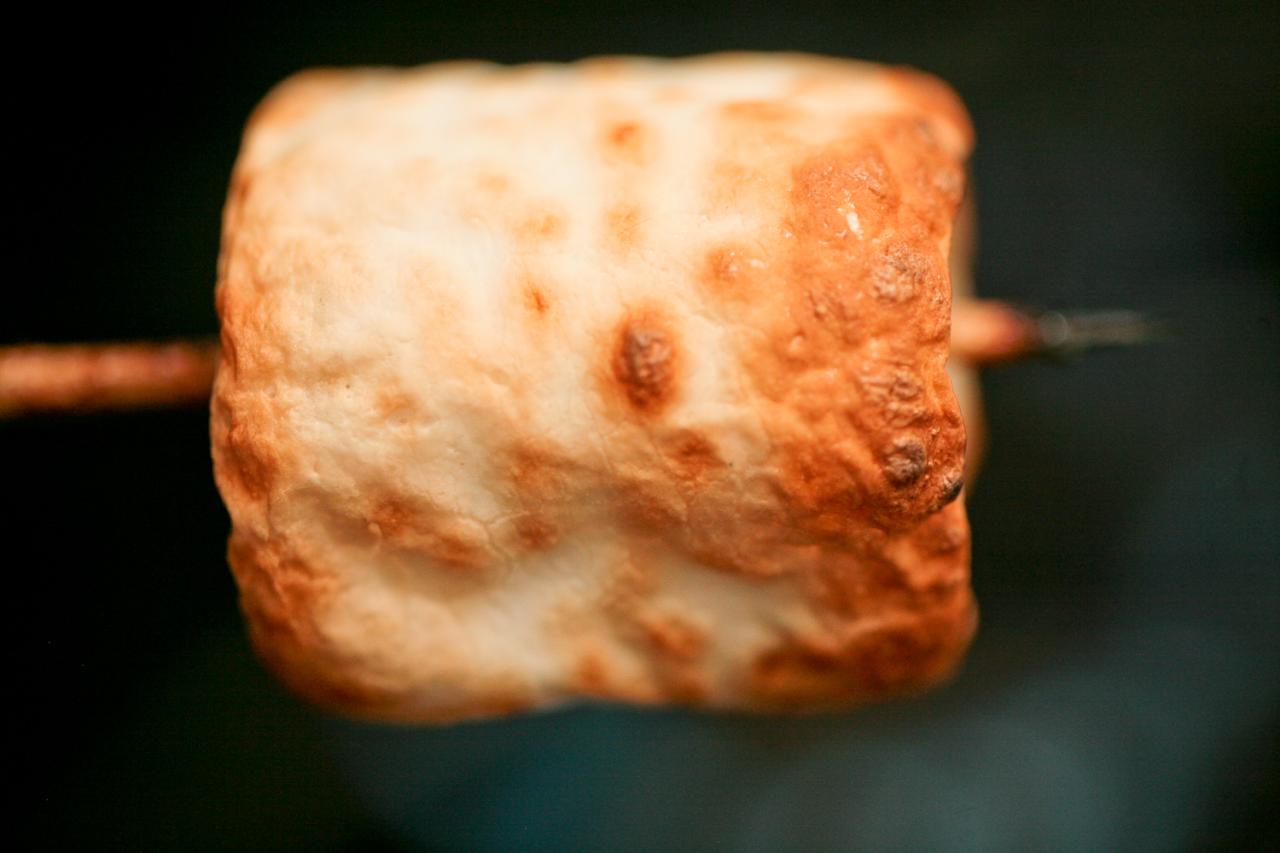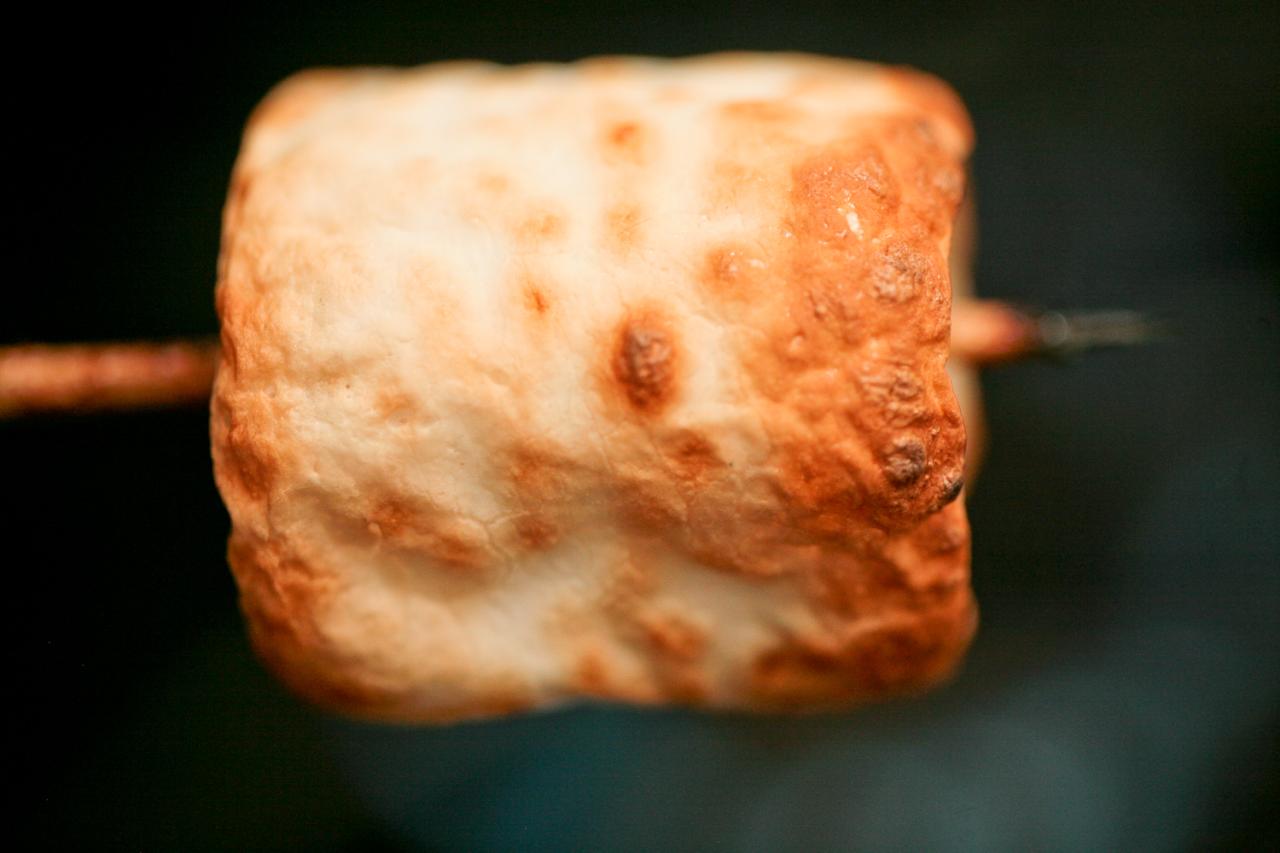The texture of a roasted marshmallow is a culinary delight, offering a unique combination of crispiness and chewiness. This beloved treat is a staple in s’mores, hot chocolate, and other desserts, adding a touch of sweetness and texture to any occasion.
When roasted over an open flame, the marshmallow undergoes a transformation. The exterior caramelizes, creating a crisp, golden-brown shell. The interior remains soft and gooey, providing a delightful contrast in texture.
Sensory Characteristics of Roasted Marshmallow Texture
Roasted marshmallows possess a distinctive texture that tantalizes the senses. When touched, they exhibit a delicate crispiness that yields to a soft, yielding chewiness.
Crispiness
The exterior of a roasted marshmallow develops a thin, crispy layer due to caramelization. This process occurs when the sugars in the marshmallow react with heat, creating a golden-brown crust.
Chewiness, Texture of a roasted marshmallow
Beneath the crispy exterior lies a soft and chewy interior. The marshmallow’s high gelatin content contributes to this texture, creating a gooey, elastic quality that provides a satisfying bite.
Factors Influencing Texture
The texture of a roasted marshmallow is influenced by a variety of factors, including roasting time and temperature, marshmallow size and shape, and the marshmallow’s ingredients.
Roasting Time and Temperature
The longer a marshmallow is roasted, the more its surface will caramelize and its interior will soften. This is because the heat from the fire causes the sugars in the marshmallow to melt and caramelize, while the gelatin in the marshmallow melts and becomes more pliable.
The temperature of the fire also affects the texture of the marshmallow. A higher temperature will cause the marshmallow to roast more quickly, resulting in a crispier exterior and a softer interior. A lower temperature will cause the marshmallow to roast more slowly, resulting in a chewier exterior and a denser interior.
Marshmallow Size and Shape
The size and shape of the marshmallow also affects its texture. A larger marshmallow will take longer to roast than a smaller marshmallow, and it will have a softer interior. A marshmallow that is flat or square will roast more evenly than a marshmallow that is round or irregular in shape.
Marshmallow Ingredients
The ingredients in the marshmallow also play a role in determining its texture. The amount of sugar in the marshmallow will affect its sweetness and its ability to caramelize. The amount of gelatin in the marshmallow will affect its chewiness and its ability to hold its shape.
Culinary Applications of Marshmallow Texture

The distinct texture of roasted marshmallows has made them a versatile ingredient in culinary applications. Their chewy, gooey, and slightly crispy exterior enhances the taste and experience of various dishes.
Desserts
Marshmallows are an essential component of s’mores, a classic campfire treat. The roasted marshmallow’s gooey center pairs perfectly with the crisp graham crackers and melted chocolate, creating a harmonious blend of textures. In hot chocolate, roasted marshmallows add a sweet, fluffy element that complements the warm, rich beverage.
Other desserts like ice cream sundaes, pies, and cakes benefit from the addition of marshmallows, providing a delightful contrast to their smooth or crunchy textures.
Savory Dishes
Beyond desserts, marshmallows can also elevate savory dishes. Their sweetness and texture can balance out spicy or salty flavors. For example, roasting marshmallows and adding them to grilled chicken or fish creates a unique and flavorful combination. Marshmallows can also be incorporated into salads, adding a touch of sweetness and a chewy texture to the greens and vegetables.
Epilogue: Texture Of A Roasted Marshmallow
The texture of a roasted marshmallow is not only a sensory experience but also a culinary asset. It enhances the flavor and enjoyment of countless dishes, from s’mores to gourmet desserts. Whether enjoyed on its own or incorporated into a culinary creation, the roasted marshmallow remains a timeless treat that captivates taste buds and brings joy to all who savor it.
FAQ Guide
What factors influence the texture of a roasted marshmallow?
The roasting time and temperature, marshmallow size and shape, and marshmallow ingredients all play a role in determining the texture of a roasted marshmallow.
What are the sensory characteristics of a roasted marshmallow?
A roasted marshmallow has a crisp, golden-brown exterior and a soft, gooey interior, providing a unique combination of textures.
How can I achieve the perfect roasted marshmallow?
To achieve the perfect roasted marshmallow, roast it over an open flame until the exterior is golden brown and the interior is soft and gooey. Avoid over-roasting, as this can make the marshmallow tough and chewy.

